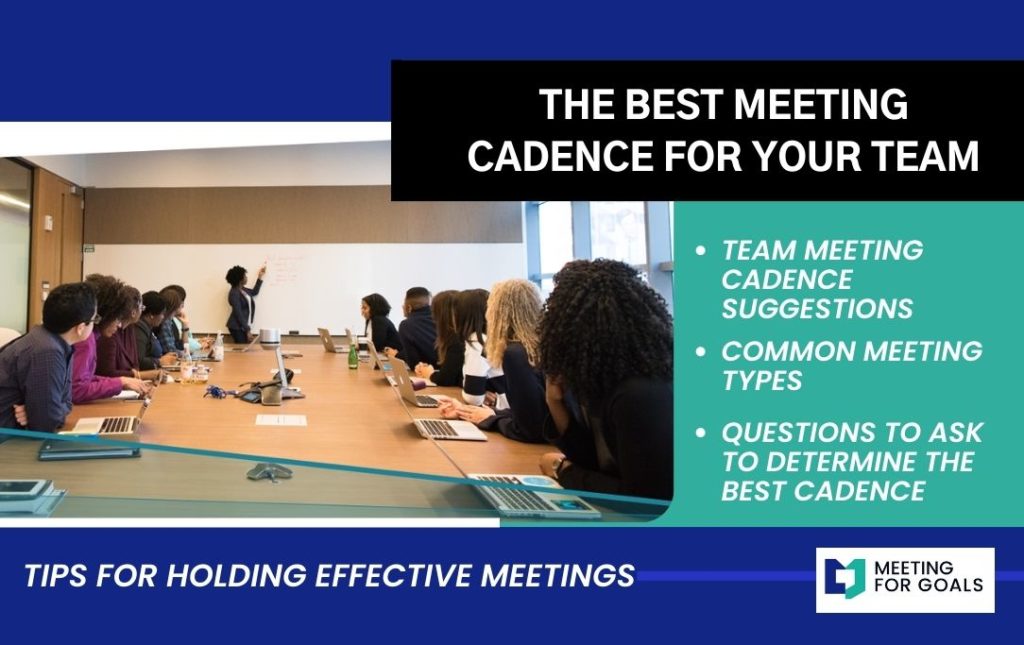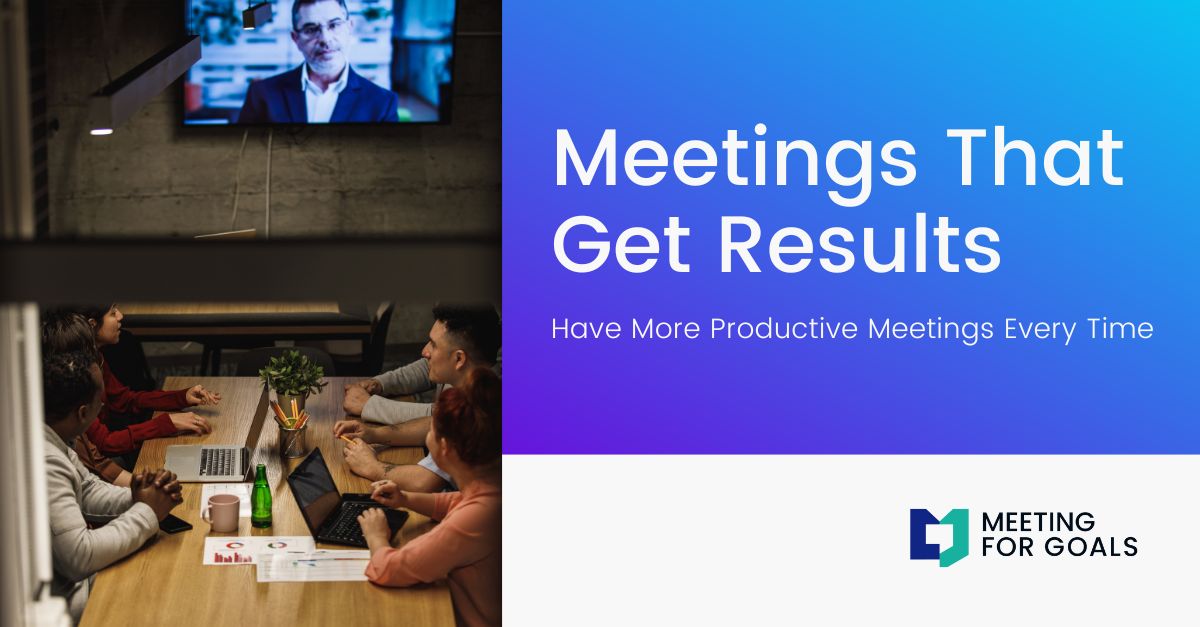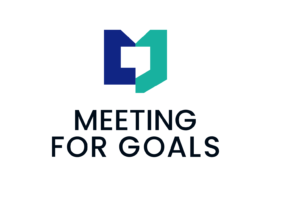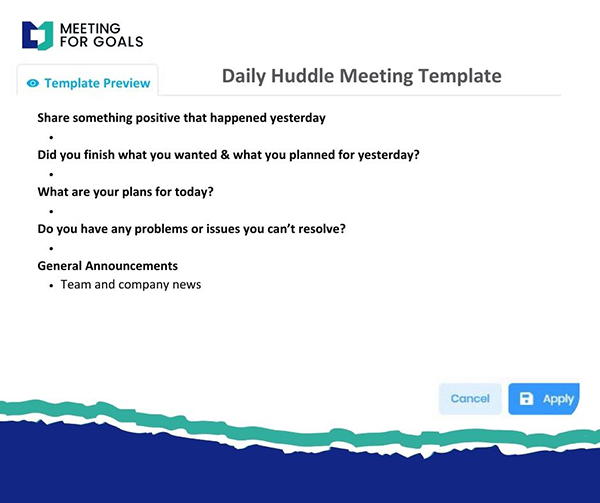The Best Meeting Cadence for Your Team

Table of Contents
An effective meeting cadence supports productivity and is great for employee morale. Use a helpful software program to set the right meeting frequency and structure to achieve optimal performance and team satisfaction.
A great team meeting should wrap up with your employees feeling confident in their upcoming work tasks and eager to get started. However, a poorly planned meeting cadence can lead to fatigue and even confusion due to conflicting or overwhelming amounts of information.
Avoid distracting your employees from their essential workload with unnecessary meetings. Instead, give them the knowledge and tools they need to perform their best during thoughtfully structured meetings focused on delivering pertinent data.
What Is Meeting Cadence?
The cadence of your team meanings refers to the frequency that you hold them and not the pace of the meeting itself. Selecting the proper cadence is a highly individualized process that is determined by your organization’s needs.
A wrong cadence can often be a waste of time for both management and employees. This cuts productivity and can frustrate your employees who would be better served if allowed to concentrate on their work.
Your goal when setting a meeting cadence is to offer your team the proper amount of support through tools, updates, and feedback. An effective meeting uplifts your employees and gives them the knowledge they need to perform better at their jobs, which leads to greater success within the company.
Determine the most effective way to communicate with your entire team by adopting the correct meeting cadence. Give ample time to interact, ask questions, and offer suggestions, without adding to employee stress. Schedule your meetings at convenient times that don’t interfere with hard deadlines or create a time crunch.
Use helpful software from Meeting for Goals that allows you to structure your team meetings in a productive way. You can create a target meeting agenda that keeps you on track to reach the goal of the meeting and assign tasks, all while saving time. You can get many free meeting agenda templates so there is no need for you to start from scratch.
Team Meeting Cadence Suggestions
There are some common meeting schedules that you can choose to follow:
- Quarterly
- Monthly
- Biweekly
- Weekly
- Daily
Normally, the more frequent the meeting cadence is, the shorter they should be. A quick daily meeting can be used to check in or motivate your employees for a productive day, while a quarterly meeting can be time-consuming and cover a lot of ground.

Common Meeting Types
Meetings come in many forms. There is the office-wide meeting, 1 on 1 meeting, and those for a specific group or department. The goal of your meeting will determine how often you need to meet and who should be invited.
Always try to limit your meeting to only those who need to be involved. If necessary, minutes of meeting objectives and decisions can be sent to the entire office after the details have been worked out. Here are some of the common meeting types and suggested cadence:
- 1 to 1 – The typical one on one meeting is conducted to give a performance review, discuss concerns about work quality, and talk about future career growth or a potential raise. Most meetings of this type take place weekly or monthly.
- Office-wide – These meetings cover big changes that are about to take place or general information that affects every employee. Most organizations conduct a monthly office-wide meeting to keep all employees up-to-date.
- Management meetings – usually monthly or biweekly, depending upon the amount of information that needs to be covered. If your company is constantly switching gears and focusing on a new project, then a more frequent meeting is best so management can pass the information on to their team.
- Department meetings – these are used to discuss progress within a project. Weekly is the best cadence for this type of meeting.
- Office hours – some supervisors and management staff may choose to be available for questions and concerns during a specified timeframe each day.
Questions to Ask to Determine the Best Cadence
If you are having difficulty deciding upon the best cadence for your team, consider the following questions to get a better idea of what you need:
- What is the purpose of the meeting? Are you going over past performance or setting goals for an upcoming project?
- Who needs to attend?
- Is the meeting about an urgent matter?
- Do the meetings normally run over the allotted time?
- Are the topics covered before the meeting is scheduled to be over?
Remember to be flexible and experiment to find the best structure for you and your team. You can always change the cadence to better suit your needs. Ask for feedback from your team. Be open to suggestions on the more effective way to stay on task. You may find that the cadence that works well fluctuates throughout the year.
Use any hurdles and hiccups you experience as information to help you improve and do better in the future.
Tips for Holding Effective Meetings
- Create your talking points and topics in advance and send a copy of the agenda to all staff that will be attending. This gives everyone time to familiarize themselves with the topic and come up with any questions they may need to ask.
- Keep meeting numbers down to those who must attend. It is a waste of time to include employees in a meeting where they don’t benefit from the subject matter.
- Choose meeting times wisely. It’s essential that you don’t put your employees in a position where they struggle to meet their daily work goals.
- Be thorough but concise. If the material has been addressed to everyone’s satisfaction and there are no questions, end the meeting early instead of drawing it out to fill the scheduled time. If your meetings normally end early, consider shortening the duration or making them less frequent.
Your meeting cadence should keep your employees informed and connected without wasting their time. Use software from Meeting for Goals to create a more organized and successful meeting cadence for your team.

Meeting For Goals Editorial Team
Meeting For Goals is where high performing teams go to have effective meetings, achieve goals & improve morale. All in one painless workflow. Use Meeting For Goals to help guide your meetings and ensure you have the most productive meetings.

How To Reduce Meetings in the Workplace
Introduction Every manager has been in a meeting that went on way too long, or spent too much time discussing things that could have been

Tips to improve your meeting culture & Symptoms of bad meeting culture
Introduction Meetings are an essential part of every company’s life, but they can also be a huge waste of time. The good news: with some

Why are meetings important? Their Advantages & Tools to Have Great Meetings
Introduction Meetings are an essential component of running a successful business. They help you share information, solve problems, and give everyone on your team an

